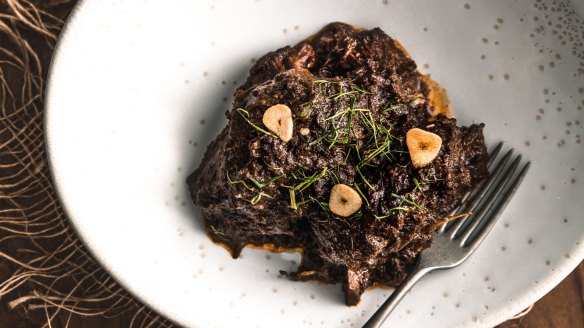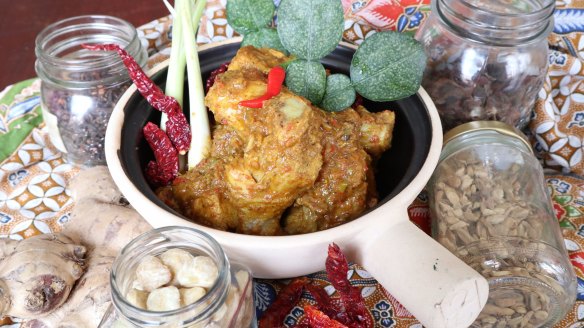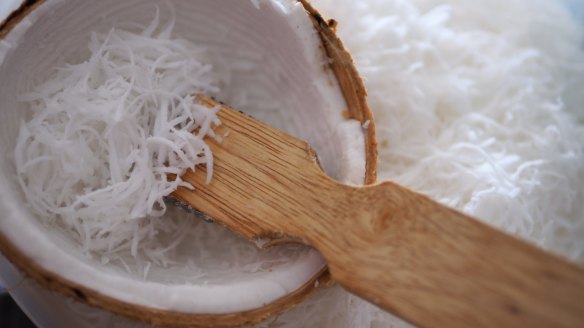Rendanggate adds spice to a legendary dish
Crispy rendang? Chefs, including MasterChef contestant Zaleha Kadir Olpin, have their say on the matter.

Rendang, once voted the best food in the world in a CNN reader poll, is back into the headlines. On a recent episode of MasterChef UK in which contestants were asked to cook a favourite dish, Malaysian chef Zaleha Kadir Olpin served judges Gregg Wallace and John Torode nasi lemak, a garnished coconut rice dish that is a staple in her homeland, with chicken rendang.
Wallace stingingly pronounced that "the chicken skin isn't crispy, it can't be eaten" and Olpin was eliminated at the end of the round.
An outpouring of social media outrage ensued. The dish, a stew usually made of meat simmered for hours in coconut milk and spices, may be covered in sauce or cooked until dry, but it is never crispy.

Indonesian and Malaysians, who traditionally dispute the paternity of the dish, set aside their differences to denounce Wallace's condescending whitesplaining and culinary ignorance. Wallace quickly backtracked from the "crispy" qualifier, saying he just meant that the chicken was "white and flabby", but the damage was done.
"Rendanggate" quickly escalated into a diplomatic incident with the Malaysian Foreign Minister and the British High Commissioner to Malaysia defending the dish. Politicians across Malaysia, then on the eve of a divisive parliamentary election, were briefly united. Mahathir Mohamad, who came out of retirement to become prime minister again last month aged 92, tweeted sardonically, "Maybe you are confusing rendang chicken with KFC," while his defeated opponent, Najib Razak, pondered, "Where do people eat crispy chicken rendang?"
Damian D'Silva, executive chef of Folklore restaurant in Singapore, another country that considers rendang a national treasure, recognises the dish's Indonesian roots. "The origins of rendang stem from the Minangkabau [people] of West Sumatra," says the newly appointed MasterChef Singapore judge. In Sumatra, the dish was originally made with buffalo, though there are a number of traditional versions using clams, jungle ferns or jackfruit.
The secret of making good rendang is patience.
When rendang arrived on the Malaysian peninsula, chicken became the protein of choice. "As it takes quite a bit of effort to assemble and process all the fresh ingredients, you would find this special dish served on occasions such as Hari Raya [marking the end of Ramadan] or weddings," says Nazlina Hussin, founder of the popular cooking school Nazlina's Spice Station in Penang.
One person who wasn't surprised by the crispy rendang debate was chef Mohd Shawal Basry, of Bijan in Kuala Lumpur. "The judges' remarks reminded us of our own rendang itik (duck rendang)," he says. Instead of stewing duck, he uses French-style duck confit, slow-cooked in its own fat then fried to a crisp and served with a rendang sauce. "Eh voila! Crispy duck rendang!"
Traditional rendang daging Minang (Minang-style beef rendang)
Chef Damian D'Silva says rendang was originally a method of conservation and was probably influenced by exchanges with India. "Rendang could be kept for long periods, mainly due to the spices that were used," he said. It was so popular it spread around the region. "The Minangkabau were great travellers. Rendang became known in other parts of Indonesia and eventually reached Malaysia and today the world."
INGREDIENTS
1.5kg-2kg beef shank (or shin), cut into 10 equal chunks
8 stalks lemongrass, white parts only, bruised
15 kaffir lime leaves
2 turmeric leaves, julienned, if available
6 Indonesian bay leaves (omit or substitute fresh curry leaves if unavailable)
salt to taste
2 litres coconut milk
2 litres coconut water
Spice blend
50g coriander seeds
30g cumin seeds
30g fennel seeds
20g garam masala
Rendang paste
300g shallots, peeled and chopped
100g ginger, peeled and chopped
80g galangal (about 1 three-inch piece), peeled and chopped
30g fresh turmeric, peeled and chopped (or 1½ tsp dried)
80g garlic (about 2 heads), peeled and chopped
30g dried chillies, soaked and drained, or to taste
4 candlenuts, soaked and drained, or substitute 4 macadamia nuts, 8 blanched almonds or 12 cashews
METHOD
Step 1
To make the spice blend, roast the coriander, cumin and fennel seeds and garam masala in a dry pan over low heat until fragrant. Grind to a fine powder and reserve.
Step 2
To make the rendang paste, pound together all of the aromatics in a large mortar and set aside.
Step 3
Place coconut milk into a large heavy-based pot over medium heat and cook until it "breaks" and the oil begins to separate around the edges. Add the paste and cook, stirring continuously until it dries up and it becomes a dark chocolate colour. Add the powdered spices, lemongrass, leaves and coconut water and stir until smooth. Add beef and stir until the meat is well coated, about 20 minutes.
Step 4
Continue to cook on a slow to medium heat, stirring every 20 minutes, until tender. Depending on how tough the beef is, this might take between four to five hours. Somewhere, between the third and fourth hour the meat will start to become tender. Salt to taste and serve as is for kalio (wet rendang).
Step 5
For a traditional dry rendang, remove the lid and cook, stirring gently, until the liquid dries up. Only salt when ready to serve. The colour should be rich and dark, almost like a good ganache.
Serves 8 or more

Rendang ayam kunyit (chicken rendang)
"The secret of making good rendang is patience," says Nazlina Hussin, of Nazlina's Spice Station in Penang. "Let it simmer slowly in an open wok until the chicken pieces are tender and falling off the bones. Serve it with hot white rice or cold rice cakes (ketupat)."
INGREDIENTS
2 cloves
1 star anise
2 green cardamom pods
1 cinnamon stick
1 tbsp oil
2 lemongrass stalks, white parts only, bruised
1 small chicken (about 1 kg), cut into pieces
salt to taste
1 tbsp curry powder for meat
2 tbsp thick tamarind juice
1 cup water
200ml thick coconut milk
1 heaped tbsp jaggery powder (or substitute dark brown sugar or palm sugar)
2 young turmeric leaves, shredded, if available
4 kaffir lime leaves, hard spine removed and shredded finely
2 tbsp kerisik (see method)
Rendang paste
6 large red chillies, roughly chopped
4 birdseye chillies, or to taste, finely chopped
10 shallots or 4 red onions, roughly chopped
½ head of garlic, roughly chopped
4 candlenuts (or substitute 4 macadamia nuts, 4 blanched almonds or 6 cashews), roughly chopped
2.5cm knob fresh ginger, peeled and finely chopped
2.5cm knob fresh galangal, peeled and finely chopped
1cm piece fresh turmeric, peeled and finely chopped
METHOD
Step 1
Marinade chicken pieces with some salt and meat curry powder for a minimum of one hour or overnight in the fridge.
Step 2
Blend the rendang spices to a coarse paste in a mortar or blender, adding a little water if needed, and set aside.
Step 3
Heat oil over medium heat and saute the "four sisters" (cloves, star anise, cardamom, cinnamon) with the rendang spice paste and lemongrass stalks, stirring. To prevent burning, add a little water if necessary and scrape off any bits that stick to the pan.
Step 4
When the oil separates from the paste, reduce heat to low-medium, add chicken pieces, tamarind juice and a cup of water. Cover the pot and simmer for about 15 minutes.
Step 5
When the chicken is almost cooked, add thick coconut milk, brown sugar, turmeric leaves and kaffir lime leaves and season to taste with salt.
Step 5
Wait until the mixture bubbles gently, put in kerisik, let rendang simmer slowly for about 30 minutes until the sauce thickens then serve with white rice or cold rice cakes.
Serves 4

Kerisik
Kerisik, or pounded toasted coconut, is an indispensable addition to most Malaysian rendang recipes. Beyond thickening stewed dishes, it is used in kerabu (salads) of fern, bean sprouts or rice, for example. Any extra will keep in the fridge for a week or two or can be frozen for later use. You'll need 100 grams of fresh or frozen coconut meat, not desiccated coconut. If you're using frozen coconut, thaw it and squeeze to remove excess moisture. Grate the coconut meat finely then place in a heavy pan over low heat with no additional oil. Stir constantly until toasted to a deep golden brown, about 10 minutes. Immediately transfer to a mortar and pound until coconut begins to look moist and is uniform in colour, about five minutes. Stop before it turns into a paste.